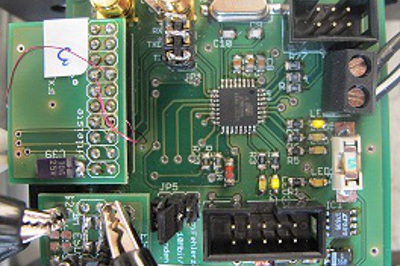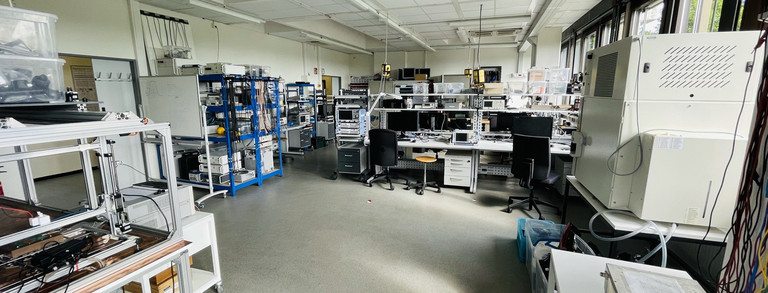On-board communication networks
Goals
Modern automotive bus systems operate with comparatively high data rates, but very simple cables as the transmission medium. Ensuring reliable data transmission is a complex task, especially for extended networks. Simulation is an important tool for this. Precise models for automotive bus system components such as bus lines, transceivers and passive structures are necessary.

Methods
The work area on-board systems deals with the following focal points in the field of automotive bus systems:
Modeling and simulation of bus lines.
When modeling unshielded and shielded bus lines, special attention has to be paid to differential data transmission, which is common for CAN, CAN-FD, FlexRay or Ethernet. Especially for longer lines, frequency-dependent losses - such as those caused by the skin effect or radiation - must also be modeled. Models for multi-conductor systems have been developed and are continuously optimized. The following points are in the foreground:
- Skin effect in the time domain
- Interference immunity
- Interference emission
- Shielding
Modeling and simulation of bus transceivers
Behavior-based modeling allows a fast and at the same time accurate reproduction of relevant properties of transceivers. Thereby an exact knowledge of the internal structure of the component is not necessary. A well-known and widely used standard for behavior-based modeling is IBIS. The underlying ideas were taken up and extended. Models have been created for various transceivers and are continuously improved.
Investigation of signal integrity in bus systems (CAN, FlexRay, Ethernet)
The transmission of signals on the physical layer of bus systems is influenced by many factors. Variations in component parameters or different configurations can significantly affect reliability. The proof of reliable operation is a research focus at the research area of on-board systems. For a reliable statement, a large number of parameter combinations must be investigated and automatically evaluated, which is only possible by simulation. The use of modern optimization methods proves to be helpful here.
Further information
Modeling of Frequency Dependent Losses of Transmission Lines with VHDL-AMS in Time Domain
Multiconductor Transmission Line Modeling with VHDL-AMS for EMC Applications
Modeling of Electromagnetic Field Irradiation in Multiconductor Systems with VHDL-AMS
Models for automotive multiconductor systems with VHDL-AMS and Modelica

